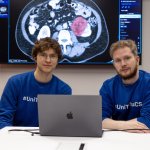
News • Clinically validated framework
AI helps detect kidney cancer faster
A novel machine-learning-based solution analyses CT images and helps radiologists detect both malignant and benign lesions in the kidney more quickly and reliably.

A novel machine-learning-based solution analyses CT images and helps radiologists detect both malignant and benign lesions in the kidney more quickly and reliably.
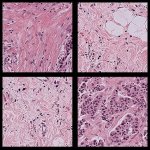
A sample of inequality: A new study shows that AI models can infer demographic information from pathology slides, leading to bias in cancer diagnosis among different populations.
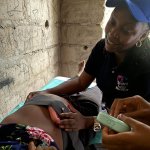
Introducing mobile iCTG dramatically improves the detection of fetal heart rate abnormalities and strengthens perinatal outcomes - even in resource-constrained environments, a new study shows.

New research shows that a harmless strain of Klebsiella – discovered by chance in laboratory experiments – can eliminate infections and reduce gut inflammation in inflammatory bowel disease (IBD).

Radiotherapy is effective against prostate cancer but can cause side effects. Using AI, scientists found that images originally taken to help position patients could also predict rectal bleeding.

Artificial intelligence is reshaping how clinicians identify women at higher risk of breast cancer – and may soon guide decisions on supplemental screening and treatment. At the European Society of Breast Imaging (EUSOBI) annual scientific meeting in Aberdeen, Scotland, two experts presented their latest findings on AI-driven risk stratification and response prediction.
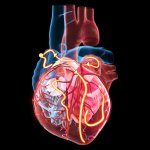
Despite significant advances in the treatment of atrial fibrillation, a new Danish study shows that social inequities in survival have remained virtually unchanged over the past 20 years.

Even minor functional impairments of the kidneys can have serious consequences for patients after major surgery. New biomarkers could help identify high-risk patients at an early stage.
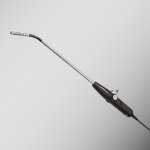
Fujifilm announced the European release of its Advanced Laparoscopic Linear Transducer L43LAP, with a wider ultrasound field of view, a tip design intended to facilitate position and orientation identification, single-handed operability, a bending angle of up to 110 degrees, and compatibility with puncture and ablation procedures.

Breast cancer screening for women under 50 isn't cost-effective – yet 1 in 5 diagnoses occurs in this age group. A new study suggests a personalised approach that could change this equation.
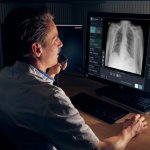
Two major Dutch hospitals, Catharina Ziekenhuis in Eindhoven and University Medical Center (UMC) Utrecht, are integrating artificial intelligence (AI) from Qure.ai into their chest X-ray workflows.

Facing a mental health crisis, more and more people turn to chatbots and AI characters. While they offer new possibilities, they also pose great risks, especially for vulnerable users, experts warn.

Researchers have designed a tiny robotic catheter, steered from outside using magnetic fields. The device has the potential to improve infertility treatments, without damaging delicate tissue.

Many women over 50 schedule mammograms for breast cancer but miss out on CT lung cancer screenings they're also eligible for. Targeted outreach coul help change this, a new study shows.

At the 2025 Journées Francophones de Radiologie (JFR), novelist, diplomat, and physician Jean-Christophe Rufin took the stage to remind an audience of radiologists that medicine, at its core, is a human story – one that needs to be told, felt, and shared. Beneath the cold light of MRI scanners and the hum of technology, he reintroduced something fragile yet essential: empathy.
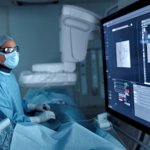
At the RSNA 2025 annual meeting, Royal Philips has announced the expanded commercial availability of their LumiGuide 3D Device Guidance system for light-based navigation.

IDH mutated gliomas are slow-growing brain tumors with a relatively good prognosis. A new study shows that many patients reveal measurable cognitive impairment in the first year after treatment.
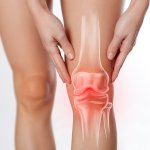
Thousands of NHS knee replacement operations are cancelled at short notice every year, many for avoidable reasons, a new study shows. This costs the NHS millions of pounds and increases waiting times.

At this year’s RSNA annual meeting, Siemens Healthineers is presenting its new AI-powered solution for imaging procedures, called Optiq AI, designed to deliver higher quality low-dose images.

How can hospital design help adapt to pandemics and climate emergencies? To explore new solutions for smart and sustainable healthcare, experts from Taiwan and Sweden shared their experiences.

One-third of junior doctors have experienced sexual harassment and abuse within their healthcare system. A new research anthology aims to help understand and tackle the root causes, and find potential solutions.
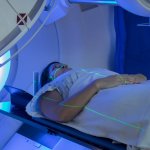
While saving lives remains the primary goal, a new study explores how radiation therapy also helps breast cancer survivors return to work. Policymakers should factor this in, the researchers argue.

What have been the latest developments in digital R&D and lab automation, patient-centric design, digitalised manufacturing and supply chains? Highlighting the rise of a smart pharma, AUTOMA+ 2025 took place in Vösendorf, Austria on 24-25 November. The event was a dynamic interplay of technology, solutions and forward-thinking ideas.
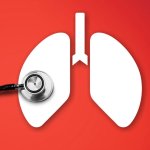
A European consortium has developed a new decision making framework for health professionals which they hope will transform the care of patients with chronic obstructive pulmonary disease (COPD).
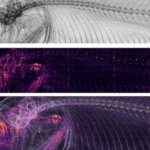
Researchers developed an X-ray imaging method capable of revealing hidden features in a single shot. This could advance cancer detection, disease monitoring, security screening and material analysis.
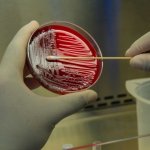
Pseudomonas aeruginosa, a hospital-acquired bacterium that causes serious infections, can move from the lungs to the gut inside the same patient, raising the risk of sepsis, new research reveals.

Depression is not only a disease of the mind or the brain, a new study finds: a research team has revealed deep connections to abnormalities in the body's overall immune response.
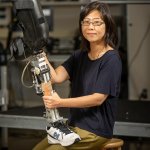
Researchers developed an algorithm for personalizing robotic prosthetic devices to optimize the movement of the prosthetic limb and also help a user’s body engage in a more natural walking pattern.

Delivering a pathology service in resource-constrained locations and developing countries remains a challenge. Cost is a significant barrier, as is the availability of equipment, trained staff and technical and IT support can also hinder a desire from clinicians and pathologists to give their patients a high level of service to help their diagnosis and recovery. The subject was tackled in a…

Produced in ISO 9001, ISO 13485, and FDA-registered facilities, our medical wipes meet the highest hygiene standards. Suitable for disinfecting surfaces, patient care, and skin preparation, they can be customized with antibacterial agents, alcohol content, and packaging formats per client requirements. FOR CLIENT'S CUSTOMIZATIONFDA approved EPA approved…

A major new initiative aims to enable the development of advanced, specific and highly reproducible human in vitro models for greater understanding of disease and the acceleration of new medicines.

Researchers have developed a new 3D printing technique for blood vessels on glass. This could be a tool for studying stroke causes and testing patient-specific medications without animal testing.

Dunlee will present its portfolio of integrated imaging solutions at RSNA 2025 in Chicago, Illinois. The company will demonstrate technologies for diagnostic and therapeutic imaging applications, including developments in Ultra-High Resolution and Photon Counting CT (UHR & PCCT), components for MRI-guided breast biopsies, and onboard imaging systems for radiation therapy.
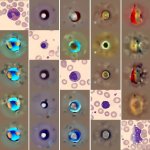
Researchers have created a system that uses generative AI to study the shape and structure of blood cells, and spot unusual or rare cells that may indicate disease such as leukaemia.
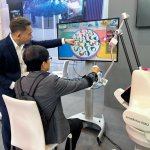
Rehabilitation specialist Fourier Rehab presented its portfolio of robotic systems at MEDICA. The solutions ranged from exoskeletons to cycling-based therapy devices and platforms for data management.

Current scores to assess the severity of illness in ICU patients often fail in international contexts. Researchers now call for a global scoring system based on universally available data.
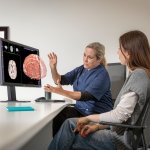
A new solution enables doctors to show 3D images of a patient's anatomy during consultations. The technology is designed to help patients understand their conditions and make informed choices.
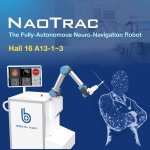
NaoTrac is a fully autonomous surgical navigation robot designed to enhance precision, safety, and efficiency in neurosurgery. By integrating advanced technologies with the expertise of surgeons, NaoTrac streamlines surgical workflows, shortens the learning curve, and improves patient outcomes.

AHC provides medical-grade wet wipes for hospitals, clinics, care homes, laboratories and home healthcare. As a trusted OEM and private label wet wipes manufacturer, we support brands worldwide with customized formulations for infection control, patient hygiene and sensitive skin. Production takes place in certified class 100K cleanrooms using medical-quality nonwovens and purified EDI water.…

Researchers have developed a novel 3D-printable material that is both biocompatible and highly elastic. The technology could pave the way for artificial organs and improved drug delivery systems.

Today, language barriers in healthcare can be easily overcome – leading to improved patient care. Pocketalk, the global leader in translation hardware, software, and integration, delivers accurate, mobile, and secure translations that exceed industry security standards.
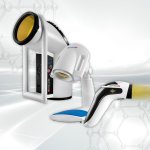
Bioptron Hyperlight Therapy is a certified medical device that uses a patented form of polarized, polychromatic, non-coherent light. The therapy works by delivering specific light characteristics, which stimulate local blood microcirculation, enhance cellular regenerative process, decrease pain and stimulate immune system. This non-invasive and painless photobiomodulation method is clinically…

A new study shows how AI could transform medical education, while calling for stronger collaboration across schools, hospitals, and regulators to make it safe, responsible, and effective.
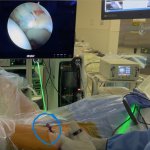
Engineers have developed a new surgical device for hip arthroscopy which they hope will completely change procedures in the hip region, making them safer and more efficient than before.

Europe’s healthcare systems face growing pressure: fewer staff, higher infection-control demands, and increased documentation. Estonia is already built for this. With 99% of health data digital, digital trust is built into everyday healthcare – giving Estonian companies a strong foundation for efficient collaboration, fast traceability, and AI-supported operations.

New hope for patients with neurological diseases: A combination of focused ultrasound and gene therapy enables targeted, nonsurgical control of seizure-relevant brain regions.
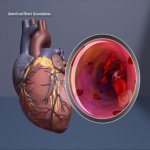
A patient reports with chest pain, but in the coronary angiogram, the main heart arteries look clear, so it cannot be angina – right? A new study reveals that this approach can easily lead to misdiagnosis.

An international research team has discovered a promising new therapeutic approach for aggressive prostate cancer – in the thyroid gland.
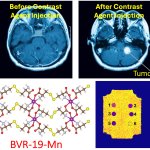
Metal-organic frameworks (MOFs) serve as the basis for a novel type of MRI contrast agent, which the developers hope can outperform current agents while being less toxic for the patient.
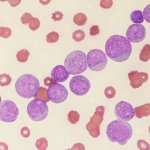
Using a bioengineered bone marrow model, researchers were able to provide key new information on the efficacy and safety of CAR T-cell therapy for acute myeloid leukaemia (AML), the most common leukaemia in adults.

Most patients with metastatic colorectal cancer do not respond to immunotherapy—but why? A new study shows how the tumours block the immune system through two complementary mechanisms.

Researchers explore how ultrasound waves can be used to activate chemotherapy drugs only in targeted areas, offering a new path toward safer, more effective cancer treatment.
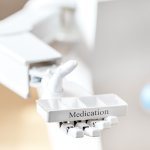
As the shortage of care workers grows, robots could help maintain the quality of home-care services. However, a new study finds that acceptance of robot helpers hinges on several key factors.

Hengrui, one of China's leading pharmaceutical companies, is preparing to bring its cancer therapies to international markets. At the ESMO congress in Berlin, Yuting (Shelley) Liu, Head of China Business Development and Strategy of Hengrui Pharma, shared insights into how the company is translating decades of Chinese market experience into a global oncology strategy.
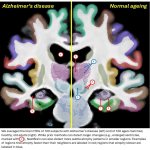
Researchers developed an AI-assisted brain atlas for visualization at microscopic detail using MRI scans. The tool could transform early detection of Alzheimer's and other neurological diseases.

In the future, health monitors and medical devices could be powered by the body’s natural sugars: A new research project aims to harness power from glucose for implantable medical devices.
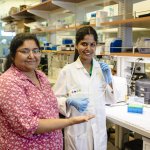
A biosensor that identifies volatile organic compounds (VOCs) in exhaled breath could be used in conjunction with AI to detect various thoracic cancers including lung cancer.

Postoperative femoral fracture—a break in the thigh bone near the hip joint—is a common complication after total hip replacement. A new study explores how implant design can reduce this risk.
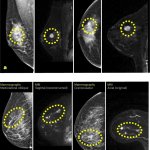
About 60% women in Europe enrolled in a national breast cancer screening programme who have a screening mammogram can feel reasonably confident that radiologists will be able to diagnose early-stage breast cancer. But what about the 30% categorised as having dense breasts, and the 10% who have extremely dense breasts? At the 2025 SBI (Society of Breast Imaging) Breast Imaging Symposium held in…

Pacemakers have a range of different functions, not all of which are needed for every patient – switching off unnecessary features could help extend the battery life of the devices by several years.

An innovative Group A Streptococcus “One-Step Antigen Extraction + Detection” Kit (immunochromatography), developed by GenSure Biotech Inc., has successfully obtained both Class B and Class C EU IVDR certifications for in vitro diagnostic medical devices.

In emergency settings, AI to analyze ECG data can improve detection of severe heart attacks, including those with unconventional symptoms, or atypical ECG patterns, and reduced false positives.

Climate change is claiming millions of lives every year, a new global report finds. The rate of heat-related casualties alone has climbed to 546,000 per year – more than one death every minute.
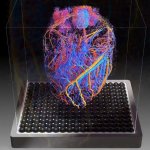
3D + time: a new 4D ultrasound imaging technique could both improve our understanding of the circulatory system and facilitate the diagnosis of certain blood circulation-related diseases.
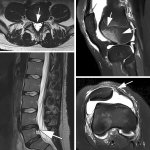
At the 2025 ESMRMB Annual Meeting in Marseille, speakers made a strong case for what remains an outsider in radiology: low-field MRI. Despite its affordability, improved performance, and reduced environmental footprint, the technology continues to face scepticism – not from regulators or patients, but from radiologists themselves.
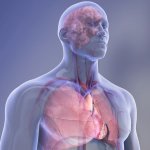
After a bout of influenza or Covid, the risk of heart attack or stroke may rise dramatically, and chronic infections may increase the long-term risk of serious cardiovascular disease events.
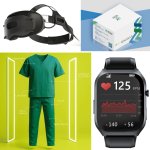
With Taipei City Government's support, six Taipei companies will showcase innovative biotech and medical device solutions at MEDICA 2025 (Nov 17–20, Düsseldorf), advancing healthcare with speed and precision.

Biomarker testing is ushering in a novel era of therapy personalisation for gastroesophageal and colorectal cancers, according to experts presenting at the 37th European Congress of Pathology in Vienna this September. During a session on state-of-the-art in gastrointestinal biomarkers, speakers outlined how targeted therapies and immunotherapies are transforming treatment options – but…

At the 38th European Association of Nuclear Medicine (EANM) Congress, held from October 4–8 in Barcelona, United Imaging, a global manufacturer of cutting-edge medical imaging technology, showcases its most advanced AI-powered molecular imaging innovations, the uMI Panvivo family and the uMI Panorama family, and highlights the company’s strong growth and confidence in the European market.

A novel subretinal implant could help patients with age-related macular degeneration (AMD) partially restore eyesight, a new study shows. Participants recovered their ability to read letters, numbers and words.
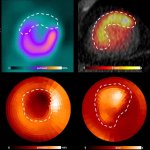
A new approach to PET imaging offers a promising way for physicians to promptly identify patients who are at risk for poor functional recovery after a heart attack, according to new research.

During menopause, many women experience forgetfulness, trouble concentrating, and mental fatigue. A new review explores the link between brain changes during menopause and these symptoms.

An international team has developed an AI model that brings together medical imaging data and clinical information to calculate the risk of breast cancer tumour recurrence more accurately.
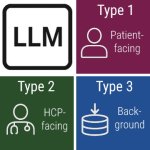
Underscoring the growing role of large language models (LLM) in cancer care, ESMO released the first structured set of recommendations to bring AI language models into oncology safely and effectively.

Magnetic resonance imaging (MRI) holds great potential to spare men with suspected prostate cancer a painful biopsy. In our interview, Dr. Peter Seidensticker, Head of Medical Affairs Radiology at Bayer, outlines how MRI could be implemented as a first-line diagnostic.

Many doctors shy away from discussing the aspect of a treatment's sustainability with their patients, expecting a negative reaction. Now, a new study suggests that these fears may be unfounded.

Newly discovered blood biomarkers may offer new options to track Duchenne muscular dystrophy (DMD) in a less invasive way than physical tests or biopsies. This could support more tailored treatments.

To help repair soft tissue injuries of the gastrointestinal tract like ulcers or hemorrhages, EPFL researchers envision a new class of device: a pill-sized, swallowable bioprinter.
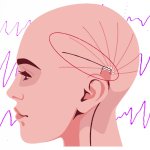
Traditional diagnostic methods for epilepsy face significant limitations. A new clinical trial explores the potential of advanced brain monitoring to improve diagnosis and management of the condition.

Researchers identified a targeted way to protect the brain from harmful side effects of cranial radiation therapy, potentially preserving the quality of life for millions of brain cancer survivors.

In the NICU, a few hours can mean the difference between unnecessary procedures and targeted, life-saving treatment. A new speed record for WGS opens new diagnostic possibilities.

Rising attendance in mammography screening programmes attest to the fact that women understand the importance of early breast cancer detection. However, the resulting workload increase is a growing challenge for many women’s imaging centres. At the 2025 SBI (Society of Breast Imaging) Symposium, breast imaging specialist Stamatia V. Destounis, MD, discussed her practice’s coping strategies.
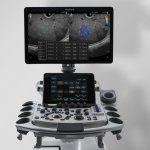
Fujifilm Healthcare Europe announces the release of a new upgrade for its diagnostic ultrasound system Arietta 850 FF Endo, enabling Attenuation Measurement (iATT) and 2D Shear Wave Elastography (SWE) compatibility for the linear curved array Fujifilm EG-740UT ultrasonic endoscope.
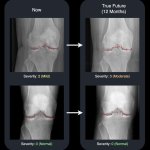
An AI system that can predict what a patient’s knee X-ray will look like a year in the future could transform how millions of people with osteoarthritis understand and manage their condition.

An expert summit for craniomaxillofacial (CMF) care brought together leading surgeons to explore how digital technologies are reshaping surgical planning, precision, and patient outcomes.
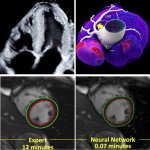
Cardiac imaging is evolving, and new techniques continue to uncover the secrets of the heart for cardiologists who know how to use them. At the ESC 2025 Congress in Madrid, four experts explored cutting-edge developments across different modalities. Ranging from AI-assisted ultrasound image acquisition and accelerated MRI protocols to advanced prognostic tools for CT and nuclear imaging, these…

Chronic fatigue (ME/CFS) affects millions worldwide, but is poorly understood and has long lacked reliable diagnostic tools. Now, a new blood test claims to diagnose the condition with 96% accuracy.

Scientists have developed a new method to track the build-up of amyloid plaques – a key characteristic of Alzheimer’s disease – in real time – an important step forward towards new treatments.
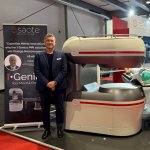
At the EANS neurosurgery congress in Vienna, Italian medical imaging company Esaote presented I-Genius, a new open MRI system designed to provide real time checks during glioma surgery.

GLP-1 receptor agonists are widely prescribed for individuals with diabetes and weight loss. However, these medications may adversely affect the interpretation of cancer imaging, new research finds.

Stroke patients in four NHS hospitals are now receiving genetic tests that determine whether a commonly prescribed drug will work for them – a breakthrough that could transform treatment for millions. Digital approaches are spearheading a drive to help make genomic medicine part of everyday care. The role of digital tools was a central theme at the HETT (Healthcare Excellence Through…

The 2025 Nobel Prize in Physiology or Medicine is awarded to three researchers for their insights into peripheral immune tolerance - how our immune system is kept from attacking our own body.

Immunotherapy has improved the treatment for many cancers, but progress has been limited in leukemia. Discovery of a new evasive mechanism could help change that.

Using PET/CT imaging, researchers discovered that the biological activity of visceral fat may drive the progression of endometrial cancer, offering a novel angle for diagnosis and treatment.

Breast cancer survivors are often discouraged from undergoing hormone replacement therapy (HRT) to alleviate menopause symptoms. Now, new research paints a more differentiated picture.
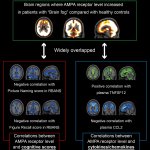
New insights on the mechanisms that cause “brain fog” in Long Covid patients: Researchers use a specialized brain imaging technique to identify a potential biomarker and therapeutic target.

Overcrowded EDs and the escalating workload of nurses are pressing challenges in emergency medicine. While AI might not solve these problems, it could help staff mitigate them, new research suggests.

Healthcare stands at a crossroads. With an impending shortage of 11 million healthcare workers by 2030 and millions dying annually from poor-quality care, the industry desperately needs transformation. Dr. Alex Ng from Tencent Healthcare explores how artificial intelligence is emerging as a powerful catalyst—not to replace human expertise, but to amplify it.

This year, the Journées Francophones de Radiologie (JFR) will carry a clinical ambition as simple as it is essential: to shine a spotlight on those who are often overlooked. Under the presidency of Professor Mathieu Lederlin, thoracic radiologist at Rennes University Hospital, vulnerable patients will be at the heart of the annual meeting of the French Society of Radiology that will unfold…

Children with asthma using at-home monitoring are around half as likely to visit the ED or be hospitalised, compared to those only receiving care from their medical team, new research shows.

Hospitalists frequently discuss the risks associated with tests, treatments, and/or surgical procedures with their patients. But is everyone in the clear on what a “slight risk of complications” actually means? A session on the meaning of risk to patients and how to effectively communicate risk was discussed at SHM Converge 2025, the annual meeting of the Society of Hospitalist Medicine held…
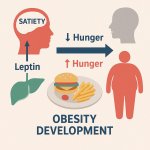
International research led by Leipzig and Ulm universities creates first standardized leptin reference values for all ages and weight classes, advancing personalized medicine

Scientists created precise replicas of Candida sugar coats to understand immune responses, enabling fast bedside testing that could replace slow lab cultures.
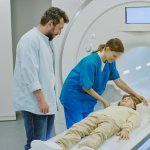
Study of 3.7 million children reveals small but significant increased risk of blood cancers from medical imaging radiation, with CT scans posing highest risk
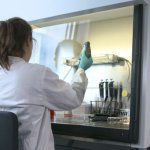
University of Stuttgart scientists develop enhanced CRISPR technique that makes genetic loss-of-function analyses more efficient and reproducible for medical research.

Using AI to help detect one of the leading killers of women worldwide: A new machine learning model can successfully predict heart disease risk in women by analysing mammograms.

The number of patients with substance abuse disorders who are admitted to hospitals as inpatients has been steadily increasing. Hospitalists attending SHM Converge 2025, the annual meeting of the Society of Hospital Medicine (SHM) in Las Vegas this spring, were given practical advice on how to treat these patients.
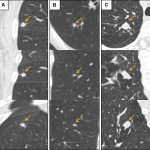
Misinterpreting the malignancy risk of lung nodules often results in high false-positive rates, unnecessary follow-ups, increased patient anxiety and healthcare costs. A new study suggests that AI can fix this.
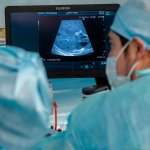
Imaging specialist Fujifilm Healthcare Europe and the research and training institute IRCAD France have announced a collaboration focused on surgical education and research programs.
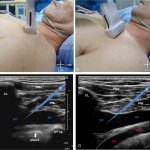
Performed inaccurately, cannulation of major veins is associated with complications like pneumothorax or artery puncture. Chinese researchers propose a new ultrasound-guided method for more accuracy.
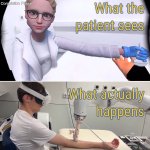
An ultrasound examination performed by a robot can cause distress in some patients. Munich researchers have now developed a VR avatar system that makes the process feel more human.
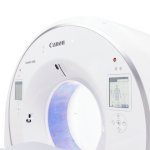
Canon announces the launch of the Aquilion One / Insight Edition 160, a new addition to its computed tomography (CT) portfolio. The new system made its debut at Röntgenveckan (Stockholm, Sweden).
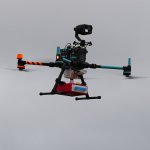
A new study demonstrates drones can deliver life-saving AEDs in just minutes from an emergency call – potentially doubling survival rates in out-of-hospital cardiac arrests.
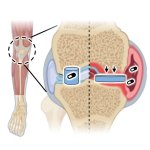
A squishy new ‘artificial cartilage’ material could improve arthritis treatments by releasing anti-inflammatory drugs in response to a flare-up.

Wrong equipment, inadequate posture, unusual behavior: Only 1 in 7 online stock photo images of blood pressure monitoring correctly show how blood pressure should be measured, a new study finds.
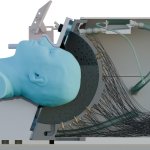
A new ultrasound helmet capable of influencing deep brain regions without surgery opens up new possibilities for neurological research and treatment of disorders such as Parkinson’s disease.

Use of an AI voice agent to prompt self-reported blood pressure readings may help improve accuracy of at-home blood pressure measures and patient outcomes in older patients with hypertension.

Systematic screening and support for mental health conditions such as depression, anxiety, or PTSD should become normalised in cardiovascular care, cardiologists urge in a new Consensus Statement.
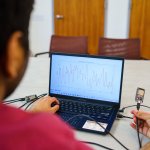
Traditionally, measuring heart rate requires some sort of wearable device. Now, new research shows how the signal from a household WiFi device can be used for this crucial health monitoring.

Hospitalists face a dual challenge when a critically ill pregnant patient is admitted to a hospital: providing safe and effective treatment for both mother and fetus. Pregnancy causes physiologic changes as well as anatomical ones, which complicates the assessment and medical management of pregnant women. At the annual meeting of the Society of Hospital Medicine (SHM) in Las Vegas, an expert…
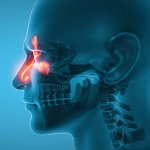
Surgery or antibiotics? For the first time, a major clinical trial compared treatment options for chronic rhinosinusitis (CRS), or sinusitis – clearly favoring the surgical approach.
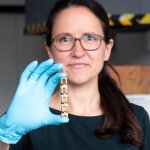
Even though many implants such as artificial joints and pacemakers are made of titanium, they occasionally break – but why? A researcher is investigating implant failure and how to prevent it.

The European Society of Cardiology (ESC) has awarded Roxana Mehran, MD, from Mount Sinai, with its top honor, the “ESC Gold Medal”, during a special ceremony at the ESC Congress in Madrid.

The Pharmaceutical Automation and Digitalisation Congress (AUTOMA+) 2025 is a hub for decision-makers and digital innovators for exchanging insights on the integration of AI within pharma operations. To bring on the networking discussions, the Congress is held in Vösendorf, Austria on November 24-25.
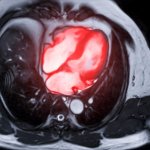
Researchers have developed a machine learning algorithm that uses cardiac MRI images to help identify breast cancer patients who may be at risk of cardiotoxicity during cancer treatment. The research, led by cardiologist Dr Paaladinesh Thavendiranathan from Toronto General Hospital University Health Network, was presented at the European Society of Cardiology's Cardio-Oncology Conference in…

A novel procedure at UC San Diego Health uses a combination of artificial intelligence and 3D printing to develop a customized implant for the spine during fusion surgery.

New AI-powered solutions for cardiac ultrasound: Italian medical imaging specialist Esaote will be present at the European Society of Cardiology (ESC) Congress 2025, which starts today (29th August) in Madrid.

One in three people do not want to know about serious illnesses—even if they might be affected themselves. A new review study explores the reasons for this deliberate ignorance.

For Sakura Finetek, the ECP congress theme “Tradition meets the future” reflects who we are: a company deeply rooted in histopathology tradition, with a proud legacy of quality and reliability, yet constantly pushing boundaries to transform the future of diagnostics.

A newly developed method to accurately quantify how much radiation is absorbed by the blood during cancer treatment could lead to more personalised, preventive, and safer radiotherapy.
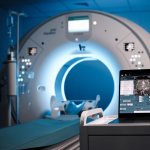
Patient communication facilitated by chatbots, image quality optimized by machine learning: Artificial intelligence (AI) is entering radiology at breakneck speed, transforming the specialty almost beyond recognition. So, how will the future of diagnostic imaging under AI look like, and which role will humans still play in it? At the ECR congress in Vienna, experts explored the societal and…

Studies have found that natural polysaccharides from a medical fungus endemic to Taiwan can not only effectively inhibit inflammation, but also fight the proliferation of lung cancer cells.
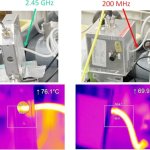
Dysphagia can significantly reduce a person's quality of life. Now, research teams have developed a new 3D bioprinting method to create safe and appealing meals for dysphagia diets.

Shortages of skilled staff is creating challenges in medical laboratories across Europe. Many workers are nearing retirement age with numerous hospital laboratories having unfilled positions and facing the further issue of sharp competition from the pharmaceutical industry for skilled personnel. The challenges, and potential solutions, for medical laboratories were aired at a session looking…
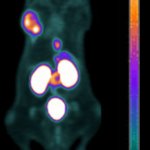
Tracer molecules serve to provide visual guidance in nuclear medicine, but a new molecule could give surgeons additional audio cues to help them locate prostate cancer tumors and metastases.
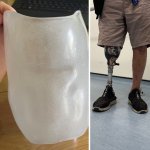
Researchers have developed a new, data-driven way of fitting prosthetic legs which could lead to better fitting prosthetics, in less time and at a lower cost.
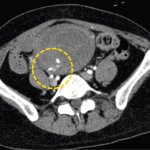
Postpartum hemorrhage is a leading cause of maternal death. A new method could help predict which women experiencing severe bleeding after giving birth most likely need life-saving interventions.

AI-driven scribes that record patient visits and draft clinical notes for physician review may lead to significant reductions in physician burnout and improvements in well-being, a new study finds.

Henkjan Huisman has been appointed Professor of AI Guided Imaging at Radboud UMC/Radboud University. With a focus on AI applications in medical imaging, his goal is to provide better and more affordable care.

Researchers report they have built a new non-toxic and non-radioactive handheld device that uses the unique properties of diamonds to diagnose metastasized breast cancer.

Digital technology is being harnessed to support the women’s health agenda in the UK and address issues of equity and access to healthcare through a range of innovative initiatives. Delegates to the HETT (Healthcare Excellence Through Technology) North conference in Manchester heard how digital technology is being leveraged to support women’s health Hubs – which tailor care to meet…

Mammography image interpretation AI models are unreliable – but so are human readers. A new hybrid strategy could reduce radiologist workload by 38% without compromising diagnostic efficacy.
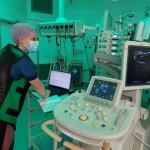
Using ultrasound imaging, researchers measure the wall thickness of the aorta from within a patient's body, to predict with higher accuracy whether an aneurysm will rupture or not.

To help people with hearing loss, researchers develop an AI-powered lip-reading camera that translates lip movements into sound. The device could also work in areas with a lot of background noise.

Blood vessels become stiffer with age, but a new study suggests that a Covid infection could accelerate this process, increasing the risk of cardiovascular disease, including stroke and heart attack.

Lower income, higher BMI, less time and fewer resources to improve their health: A new study links social and environmental factors in patients from deprived areas to poorer outcomes in surgery.

Gadolinium-based contrast agents enhance visibility but also pose a significant health risk. A new AI-powered virtual MRI imaging technique is designed to offer a safer diagnostic approach.

Breastfeeding women often choose not to take their medications because they worry about their baby; or stop breastfeeding because of their medicines. However, new research suggests that this is often unnecessary.

More clinically relevant tumors detected at an earlier stage and at lower costs: New research finds that AI can replace the second radiologist in the Dutch breast cancer screening program.
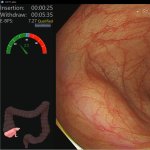
AI tools for adenoma polyp detection are designed to help increase the accuracy of colonoscopies. However, a new study finds that using AI may lead to loss of detection skills in health professionals.

Doctors wear white – but did you know that was not always the case? A new review explores the effect of attire color on patient trust, and persistent misidentification of female doctors.
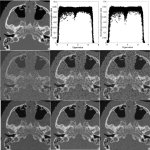
Medical imaging methods are often affected by background noise, which can obscure fine anatomical details. A new approach to solve this problem draws inspiration from quantum mechanics.

Pharmaceutical counterfeiting remains a critical issue, with high risks for patients and great economical damage. Now, researchers propose using “chemical fingerprints” to identify illegal meds.

Remote monitoring via microfluidic platforms, AI-assisted sensor systems, and more: Attendees of the Labmed Forum at Medica saw impressive examples on how wearable technology is becoming a transformative force in laboratory medicine to improve real-time monitoring of patients, covering widespread conditions such as diabetes, asthma and COPD. With an emphasis on remote monitoring, devices are…
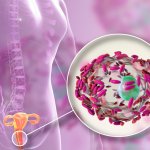
The vaginal microbiome is a largely overlooked area of medicine that could dramatically improve outcomes for common infections, infertility and even cancer for millions of women, a new review finds.

Spaceflight comes with unique health risks – which include surprisingly high rates of sinus and congestion problems, new research finds. This also has implications for future civilian space travel.

‘Intelligent bedside terminals’ installed at the upcoming NHS National Rehabilitation Centre in Loughborough are designed to help patients engage in their ongoing rehabilitation.
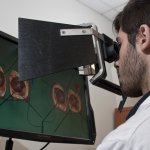
New research finds that neurosurgery students receiving AI-augmented, personalized feedback from a human instructor have better surgical performance, risk management and skill transfer.
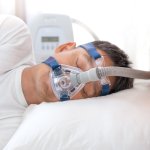
A treatment commonly used for obstructive sleep apnoea (OSA), lowers the risk of serious cardiovascular events in some patients but not others, according to new research.

Some medications can only be taken as an injection, which is often painful, unpleasant and inconvenient for patients. A new transport system could make it possible to swap these injections for pills.

Do laboratory tests using blood-based biomarkers (BBB) represent the next type of universally recommended screening tests for Alzheimer's disease (AD)? Experts curb the high expectations for this type of diagnostic tool.

Tumor vesicles may serve as early indicators of cancer and help monitor the effectiveness of treatments. Now, researchers discovered a new way to detect these vesicles.

Classifying prostate cancer as “low-grade” could create a false sense of security and delay definitive treatments. A new study shows that the biopsy grade alone can paint an incomplete picture.
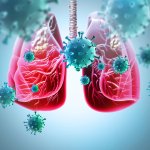
Common respiratory infections such as influenza and Covid-19 can awaken dormant breast cancer cells that have spread to the lungs, setting the stage for new metastatic tumors, new research finds.

In a new joint research center, scientists from Germany and South Korea aim to develop new technologies at the interface of nanoscience, synthetic cell biology, and neuroscience.
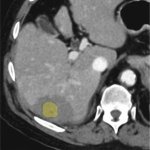
By analyzing CT images with 3D software, researchers demonstrated that small liver tumors can be successfully treated using ablation. This could enable more confident use of ablation treatments.

A new ventilation mode called proportional assist ventilation (PAV+) could improve outcomes for patients in the intensive care unit (ICU) who require help breathing, a new study finds.

When should preventive mastectomy be offered for women at higher risk of breast cancer? A new evaluation model defines thresholds at which risk reducing surgery should be recommended.
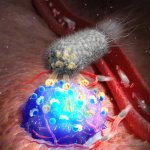
A new, bacteria-based contrast agent illuminates tumors like a neon sign during surgery, enabling more precise resection and reducing the risk of recurrence.
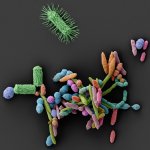
Antibiotics are known for disrupting the microbiome in the gut and thus paving the way for diseases. However, many common non-antibiotics also have this effect, a new study shows.
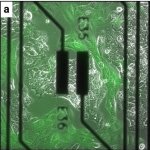
Through quantitative real-time monitoring of cell spatiotemporal dynamics, or cell changes over time, electrical impedance spectroscopy (EIS) could be used to predict cancer growth.

Hand hygiene is among the most effective ways of infection control. Yet, a new study finds that a worrying number of people do not wash their hands after using a hospital toilet.

A new AI tool has been shown to accurately predict who would go on to develop leaks in the heart valves – conditions known as regurgitant valvular heart diseases, at a very early stage from an ECG.

A new AI-based tool measures cancer aggressiveness by analyzing the ‘stemness’ of tumors – their similarity to pluripotent stem cells. This could pave the way for new therapies.

Manual calibration and parameter input in systems are time-intensive and error-prone, posing significant challenges across life sciences and hospitals. With a new generation of sensors, The Dickson Company aims to deliver a smarter, easier to use, and more autonomous monitoring solution.

Two dogs have been trained to distinguish between sebum swabs from people with and without Parkinson’s disease. This is especially relevant, as a definitive diagnostic test remains elusive.

From identifying under-utilized rooms to tracking spare mobile equipment like wheelchairs, spatial awareness technology is evolving to improve day-to-day operations on healthcare sites. The technology, which is already being deployed in airports, universities and industrial premises, is now seeing growing applications within hospitals. At the HETT (Healthcare Excellence Through Technology) North…

Saving money, at a cost: To undergo bariatric and weight reduction surgery, more and more patients turn to institutions outside their home country – potentially putting their health at risk.
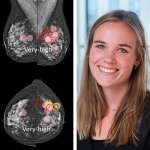
By directing radiologists' attention to potentially suspicious areas, AI can help spot more lesions indicative of breast cancer in mammograms. This is suggested by a new study.
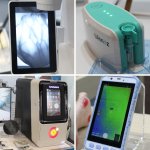
At Medical Taiwan 2025, manufacturers attracted attendees with a wide range of innovations. We took a closer look at some of the most exciting companies and their products on display at the medical, health and care expo.
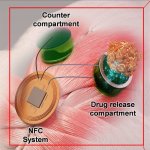
Korean researchers have developed a wireless implantable drug delivery system that enable chemotherapy drugs to penetrate deep into solid tumors—without harming surrounding healthy tissue.
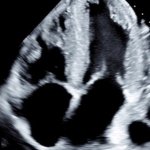
A neural network AI has been trained to detect cardiac amyloidosis from a single echocardiogram video of the heart's apical four-chamber view and differentiate it from similar heart conditions.

Beyond the visible spectrum: A new LED-based hyperspectral imaging system shows promise for gastrointestinal cancer detection during endoscopy.
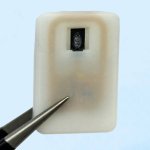
An implantable device could save diabetes patients from life-threatening hypoglycemia. Remaining under the skin, it can be triggered to release glucagon when blood sugar levels get too low.
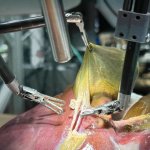
A potentially transformative advancement in surgical robotics: A robot trained on videos of surgeries successfully performed a lengthy phase of a gallbladder removal without human help.

Medical Taiwan has long been a showcase for cutting-edge healthcare solutions, but this year marked a pivotal moment. Visitors of the latest edition of the medical, health and care expo in Taipei witnessed a particularly noticeable step forward: the definitive transition of medical AI from promising research to actual clinical practice. Organized by the Taiwan External Trade Development Council…

A new study shows that retrieval-augmented generation (RAG) can eliminate hallucinations in clinical large language models (LLMs) while protecting patient privacy during contrast media consultations.

Using 48 cameras simultaneously to provide better insights during live surgery: A new kind of surgical microscope is designed to meet the need for better 3D imaging.

Using cardiac MRI, researchers have found that long-term exposure to air pollution is associated with early signs of heart damage, according to a new study.

Too many medicines, too many hospital visits: Inappropriate polypharmacy is a major driver of emergency hospital admissions among adults aged 65 and over, according to a new study.

More consistent TIL assessments, more accurate patients' prognoses: New research shows how AI sharpens pathologists' interpretation of tissue samples for malignant melanoma.
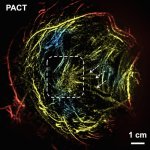
A new technique called photoacoustic computed tomography (PACT) offers a breast imaging alternative without the discomfort, high costs, or risk associated with the conventional evaluation methods.
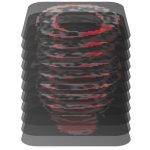
Analyzing heart imaging and a full spectrum of medical records, a new AI tool can reveal previously hidden information about a patient’s heart health, including predictions of sudden cardiac arrest.

Covid-19 has intensified domestic violence rates worldwide, with children among the most vulnerable victims. At the ECR 2025 radiology congress in Vienna, Dr Rick R. Van Rijn presented compelling insights into how radiologists can identify non-accidental trauma (NAT) in children through systematic imaging approaches. From comprehensive skeletal surveys to specific neurological imaging protocols,…

Molecular markers in saliva could reveal the risk of a person developing major diseases such as cancer, cardiovascular diseases, diabetes and neurodegenerative diseases, new research finds.
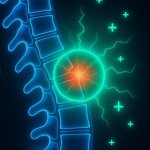
An ultra-thin implant could repair injuries to the spinal cord with carefully controlled electrical current. This could help restore movement and revert loss of sensation, the researchers hope.

Should tracheobronchial anastomoses be routinely wrapped following resection and reconstruction? A new study revisits this unresolved question in airway surgery.
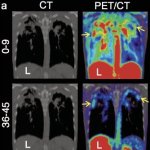
A new PET imaging technique can accurately detect and monitor Mycobacteroides abscessus lung infections—one of the most difficult-to-diagnose conditions in patients with lung diseases.

Heather Jacene, MD, assistant chief of Nuclear Medicine and Molecular Imaging at Brigham and Women’s Hospital, clinical director of Nuclear Medicine at Dana-Farber Cancer Institute, and associate professor of Radiology at Harvard Medical School in Boston, Massachusetts, has been named president-elect of the Society of Nuclear Medicine and Molecular Imaging (SNMMI).
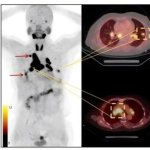
New research makes a strong case for a new dual-targeting radiopharmaceutical, designed to attach to two vulnerable sites on cancer cells, enabling more precise and potent therapy.

Patients with systemic lupus erythematosus (SLE or ‘lupus’) may wait for up to 40 years to receive the correct diagnosis. New research highlights the causes and devastating impact of these delays.
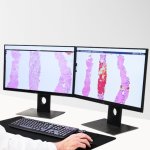
Digital pathology software company Fujifilm Healthcare Europe and Ibex Medical Analytics, specializing in AI-powered cancer diagnostics, announce a formal partnership to support efficient and accurate cancer diagnosis.

A virtual medical receptionist named “Cassie,” developed through research at Texas A&M University, is designed to transform the way patients interact with health care providers.
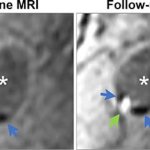
MRI study of 802 patients shows carotid plaques become more complex over six years, with calcified plaques twice as likely to develop dangerous internal bleeding.

Machine learning (ML) for personalised care, large language models for empathy training of cardiologists, wearable sensor data for better screening, and more: Digital technologies hold great potential to improve diagnosis and treatment of patients with atrial fibrillation (AF). At the ESC 2024 cardiology congress in London, four experts explored the benefits of new solutions and pointed out…
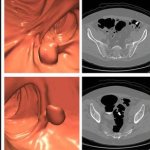
New research demonstrates CT colonography outperforms stool DNA testing in both clinical effectiveness and cost savings for colorectal cancer screening.

COVID-19 vaccination reduces risk of dialysis and death in patients hospitalized with COVID-related acute kidney injury (AKI), new UCLA research shows. Vaccinated patients were less likely to require ongoing dialysis and more likely to survive after discharge than unvaccinated patients.

The use of surgical robots offers a wide range of possibilities, but in Europe the technology is often unable to reach its full potential. Dr. med. Christoph Wandhöfer explains why.

If data used to train AI models for medical applications differs from the real-world data, it could lead to patient harm. A new study found proactive strategies to mitigate such data shifts.
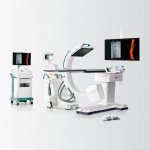
Ground-breaking innovation for endovascular surgery: The new software package Endovascular Navigation supports physicians in their interventions with planning, navigation and fusion imaging.
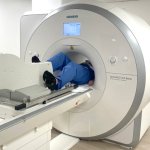
A quarter of deaths in the UK are caused by heart disease, the equivalent of one person every 3 seconds. New research suggests that effective diagnosis might literally be as easy as riding a bike.

A new ‘liquid biopsy’ test can help fast-track lung cancer patients to receive targeted therapy up to two weeks earlier, while helping avoid further tests and treatments including chemotherapy.

Using nine different molecular biological technologies, researchers were able to precisely measure the properties of a melanoma tumor in four weeks and enable a precise treatment decision.

What if every radiographer could help combat climate change while performing their daily work? Following the congress theme of ECR 2025, experts revealed how small changes – from education initiatives to simple workflow adjustments – can collectively transform the environmental impact of radiology.
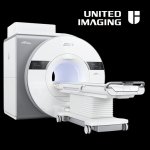
United Imaging, a global leader in cutting-edge diagnostic imaging and radiotherapy solutions, proudly unveils two groundbreaking additions to its portfolio — the uMI Panvivo and the uMR Ultra — both newly CE-marked and set to redefine the standards of precision and performance in medical imaging.

Childhood cancer diagnosis times span from immediate to delays of several years, according to a new study. Young bone tumor patients are among the most affected by these delays.

Newborns, especially those born prematurely, are vulnerable to conditions such as sepsis. A new device profiles an infant’s immune function from a single drop of blood to improve neonatal care.

COCIR, the European Trade Association representing the medical imaging, radiotherapy, health ICT and electromedical industries, is announcing a leadership change as Secretary-General Annabel Seebohm will be leaving the association at the end of May.

Personalised, responsive assistance for patients with dyspraxia: Assistive robots could help patients with motor coordination conditions by detecting and predicting intent, effort and fatigue.

Is osteoarthritis really an inevitable side-effect of an ageing body? New research challenges the idea of mechanical wear of joints as the cause of this painful condition.

A new method for predicting the risks of severe injuries during childbirth could improve care and reduce long-term complications for women.

Nuclear medicine specialist Daniela Oprea-Lager has been appointed Professor of Theranostics at Radboudumc / Radboud University. Her research focuses on the combination of diagnostics and treatment using radioactive substances, with particular interest for urological tumors, especially prostate cancer.
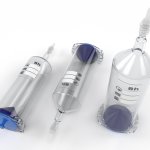
Medical device manufacturer Medtron is expanding its portfolio with two new reusable syringe models. The new products will be presented to the public for the first time at the German Radiology Congress in Wiesbaden.
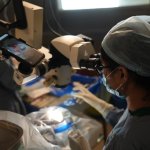
Cataracts are often treated via SICS surgery in low- and middle-income countries, which often leads to poorer results due to limited resources and training. A new AI-based tool aims to improve this.

When it comes to breast cancer, ethnic differences matter, putting some women at a significantly higher risk, a new study finds. Genetic ancestry should therefore be considered as a risk factor.
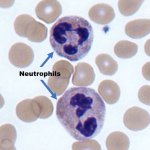
A US research team has shown that Sars-CoV-2 can “reprogram” pathogen-fighting white blood cells into immune system suppressing cells — a potential mechanism by which severe Covid may arise.

Survival rates for pancreatic cancer rise drastically the earlier it is detected, but early-stage tumors are notoriously difficult to spot. A new AI-powered diagnostic system is set to improve this.

From personalized medical guides and implants to advanced surgical planning solutions: 3D printing and visualization has seen considerable growth over the past years and is already making a significant impact in healthcare. AI, cloud, and virtual/augmented reality technologies show promise to further advance the number of applications.
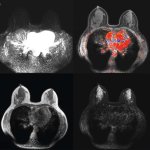
Diagnosing breast cancer in women with extremely dense breasts often comes down to MRI, but the scans take long and are expensive. Research confirms that shorter protocols also yield accurate results.

A deep learning model was able to predict future lung cancer risk from a single low-dose chest CT (LDCT) scan, according to new research published at the ATS 2025 International Conference.

Movement disorders often show overlapping symptoms, making it difficult for doctors to make the correct diagnosis. A new AI tool could help distinguish between different disorders, such as tremor and myoclonus.
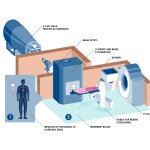
With the introduction of boron neutron capture therapy (BNCT), Helsinki University Hospital offers a new radiation therapy method that can destroy cancer cells while sparing the surrounding tissue.

Creating cardiac ‘digital twins’ at a large scale, researchers hope to gather new insights into heart health. This includes effects of age, sex, and lifestyle factors on heart disease risk.

As Emergency Departments (EDs) get ever busier, focus has fallen on the role artificial Intelligence (AI) can play in supporting patients and clinicians in delivering urgent care. The topic took centre stage in a session looking at the ethics of AI in the ED at the annual congress of the European Society of Emergency Medicine (EUSEM) in Copenhagen.

AI has the power to transform healthcare, but trust gaps among clinicians and patients threaten to slow adoption and impact, the 10th annual Future Health Index (FHI) report reveals.

Researchers have found a way to observe clotting activity in blood as it happens — without needing invasive procedures. This could open the door to better treatment of coronary artery disease (CAD).

Integration of large language models (LLMs) in healthcare is still in its early stages, but expected to expand rapidly. Now, researchers point out potential cybersecurity vulnerabilities in radiology.

Reading an LLM-generated recap to get the gist of a scientific publication? Not a good idea, a new study finds: Most leading chatbots exaggerate the findings – prompting for more accuracy even makes things worse.
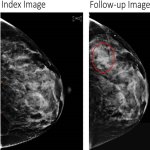
Using radiomics on mammograms of over 30,000 women, researchers have identified six breast texture patterns that may be associated with increased cancer risk.
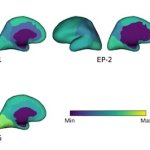
Researchers evaluated the clinical value of using ChatGPT to interpret seizure semiology in order to predict which brain areas to remove to achieve seizure freedom in epilepsy patients.
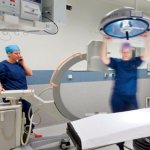
A new AI tool called PERISCOPE should help healthcare providers determine which patients need extra monitoring to protect them from wound or lung infections, UTIs or sepsis.
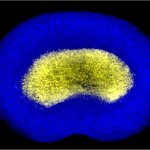
Researchers used state-of-the-art 3D bioprinting to replicate the complex structure and environment of spinal discs. Their insights hold promise for understanding back pain and disc degeneration.

A new 4D flow MRI method could accelerate diagnosis of aortic stenosis, a progressive and potentially fatal heart condition.

A team of scientists has developed a method for 3D printing polymers at specific locations deep within living animals.
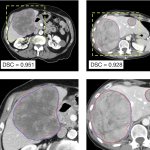
Results of a new retrospective study demonstrate the potential of a novel, CT-based deep learning-driven tool to enhance liver cancer diagnosis, treatment planning, and response evaluation.
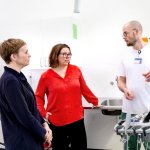
Using AI to analyse ultrasound scans can detect up to 35% more risk pregnancies than scans performed by healthcare professionals without AI decision support, according to new results.
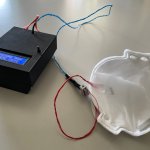
Researchers incorporated a specialized breath sensor within the fabric of a face mask to detect metabolites associated with chronic kidney disease. Initial tests showed promising results.
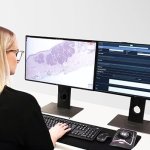
North Bristol NHS Trust and Fujifilm Healthcare Europe continue their long-standing relationship, with the establishment of a reference site agreement for the company's new pathology solution.
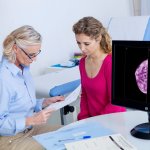
At the San Antonio Breast Cancer Symposium (SABCS), three experts presented new approaches and study results for the treatment of breast cancer in young women.